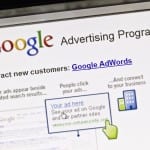When it comes to tourism marketing, many of us are suffering from information and technology overwhelm. And some of us just cannot afford in the immediate term to commission a Search Engine Optimization company to help out. But believe it or not, it is possible to achieve a robust online presence yourself and within your own team without spending a cent with these 5 step travel & tourism marketing system.
As travel researchers and marketers, we have been experimenting with various methodologies over the last few years since Google switched its algorithm over to semantic search. As a result, we have enjoyed great success as a small boutique agency in ranking for our own site.
We have decided to share this methodology with you. We have narrowed the formula down to 5 step travel and tourism marketing tactics that will boost your digital presence. These tactics do not require a huge marketing budget, but they do require time and effort. It is important to understand that they all work together as the sum of all parts and will not work in isolation.
The Cost is Time, Effort, and Consistency.
Implementing these marketing tactics will cost you time and effort, not necessarily money (unless you want to outsource some of these tasks). What’s more, this methodology is evidence-based. It has been tried and tested on MyTravelResearch.com for about 3 years with great success.
 Aside from the time and effort you put in, you need to be prepared to keep on top of the digital landscape – technology rarely sits still.
Aside from the time and effort you put in, you need to be prepared to keep on top of the digital landscape – technology rarely sits still.
To maintain success, keeping your marketing knowledge up-to-date needs to become a priority to maintain a sustainable competitive advantage.
When you opened the doors or created the website for your tourism business or destination, you signed up as Chief Marketing Officer (CMO). This means you need to take full responsibility for your marketing. And whether you decide to D.I.Y or outsource is up to you.
Search and the digital marketing landscape has changed dramatically over the past few years and continues to evolve. We are now in the age of semantic search and machine learning. This may sound like a nerd speaks, however, it can mean the life or death of your business in the Internet age. It pays to know a little.
5-Step Travel & Tourism Marketing System
-
Claim your Google Business Profile
Google is usually the starting point for most web users when searching for products online. If you want these users to find you, you need to help Google locate you by claiming your free listing on the Google Business Profile.
After creating your Google Business Profile for your business, go ahead and post lots of useful content that includes words, videos, and images.
Don’t stop just once. You will be looked upon favourably by Google if you have a continuous stream of updates, images, and videos.It would be best if you also got as many user reviews on Google as you can. Why? Because Reviews build trust with potential customers by providing real feedback from past customers. Positive reviews increase a business’s credibility, while negative reviews provide a chance for transparency when handled properly.
-
Content Marketing
Today’s customers are more information-focused than ever. They are looking for valuable information and genuinely useful content. That is where content marketing comes into it.
Not only that, you need content, and lots of it for the search engines to find and figure you out through their machine learning algorithms. Without content, it is impossible for search engines to get to know and trust you.
So to achieve real success, you need to create compelling, useful content on a continual basis. Writing only a few articles and posting them on your Facebook page is not enough. You have to constantly churn out fresh, superb content that is up to date.
The content should not overtly advertise your business, but it can revolve around any topic in the field you serve. Try to educate to sell and solve consumer problems and answer questions, rather than just selling.
It can also be extremely advantageous to deliver that useful information in a variety of formats since it will increase its appeal to your audiences and become more shareable. So make sure your content includes images, videos, infographics, PDFs, whitepapers, and others – that are relevant and relate to your written content.
Use your blog and interlinked social media profiles to distribute your content.
Blogging:
When it comes to blogging and content creation, always keep in mind that the more often you publish, the better it is for your online presence. So establish a solid blog and constantly post fresh, interesting, and valuable content. Be prolific!Quality content should be a priority over quantity
Poor content that is not useful or does not engage with your customer personas can damage your business’s trust and brand.And remember to keep your blog posts scannable, with breakouts, lists, bullets, images, and bold. Also, use keywords naturally and include both internal links (linking to pages within your site) and external links (linking to other sites); as they still matter even in today’s semantic search world.
-
Make Use of Visuals in Your Marketing
Visuals are king right now. Mike Blumenthal tells us that Google wants our images, particularly in your Google Business Profiles. This is super powerful for the travel and tourism industry.
Did you know that search engine algorithms can read what is in your images? So ensure that any images you use, relate directly to your content. Your images help provide context to the words for the search engines.
YouTube
Video is rising rapidly. 96% of consumers find videos useful when they are buying online. YouTube is where it all happens for video. And here is something else you ought to know – Google owns Youtube. And as I preach: if you love Google, Google loves you back.Here are a few tips on how to optimise your YouTube videos:
-
- Prioritise YouTube and upload all your videos onto this search engine. YouTube videos feature high in SERPs for relevant keywords and comments often appear as individual posts on Google+. These will be very helpful in enhancing your online presence.
- When creating the title, be as descriptive as you can and try to use keywords
- Tag as many videos as you can, but ensure they are relevant to and fit with your brand and target audience
- Video descriptions are searchable content and you should, therefore, provide detailed descriptions
- Include the name, address, and phone number of your business or destination in the description in the same format as it appears on your “Google My Business listing
- Include your website URL in the description
-
-
Use Social Media to Distribute Content and Engage With Potential Customers
Social media are a powerful tool that can greatly boost your online presence. But you have to do social media right to reap the maximum benefits and achieve a robust online presence. Your content must be engaging, of interest, and genuinely useful to your customers.
I like to view social media as a distributor of your amazingly useful content.
The more engaged your followers are, the more they share, like, and comment on your content, and the more inbound links to your site it generates, and this adds greatly to your ‘SEO juice’.
Engagement helps your trust, reputation, and authority. Shareability and the fact that your followers click on your links indicate to the search engines that you distribute content that is relevant and interesting to your target market.
Always remember, it is more important to have 100 truly interested and engaged followers than 1000 followers who do not engage with or share your content.
Two Way Relationship
Successful social media marketing is about creating and/or joining online conversations that keep your audience (followers) involved and engaged.
Always encourage your customers to leave reviews on Google Business Profile and other platforms and try to actively respond to all of them in a helpful, informative, and positive tone. Great responses to negative comments can sometimes be your best friend.
Your job is to provide meaningful, useful, and high-quality content that is fresh and updated on a regular basis. Try as much as you can to interact with those who see your content. Always respond to comments.
When creating content, always be true to your brand personality. Find your voice (as part of your unique online identity) and let people see and recognise it whenever they come across your content online. Your authentic voice and personality are a part of your brand and will define your online presence.
-
Mobile Marketing
Mobile is the future of the Internet. The majority of internet users and travellers now access the web using a mobile device, and if you don’t have a mobile-friendly site these potential customers will become easily frustrated with your brand, and most likely abandon you for a competitor.
You can check your own site with Google’s Mobile-Friendly Tester tool to determine whether or not your site is mobile-friendly. Just plug your URL into the tester tool to find out if you’re responsive.
It will let you know if you are or you are not mobile-friendly. And if not, it will tell you what you need to do to make it mobile-friendly.
Aside from cross-device compatibility, make sure your website is speedy and easy to navigate. Content should be easy for search engines to parse and for users to scan. Include prominent calls to action, easy-to-fill forms, and anything else that enhances navigation.
So just to recap, there are 5 actions that you need to focus on this year to optimise your online and digital presence:
- Mobile
- Google My Business
- Content
- Visuals
- Social media
Good luck! And please let me know how you go.
Others Also Read…
Local Tourism Marketing – The Low-Hanging Fruit
How To Measure ROI in Travel & Tourism Digital Marketing
Pay Per Click for Travel and Tourism Marketing
7 Key Tourism Marketing Principles to Stick To
Do you want to hear more from us?
Want to be kept up to date with the latest travel and tourism insights? Join Our Mailing List. Every 2 weeks, we send the latest practical insight for you to apply to your business and destination marketing.




Leave a Reply